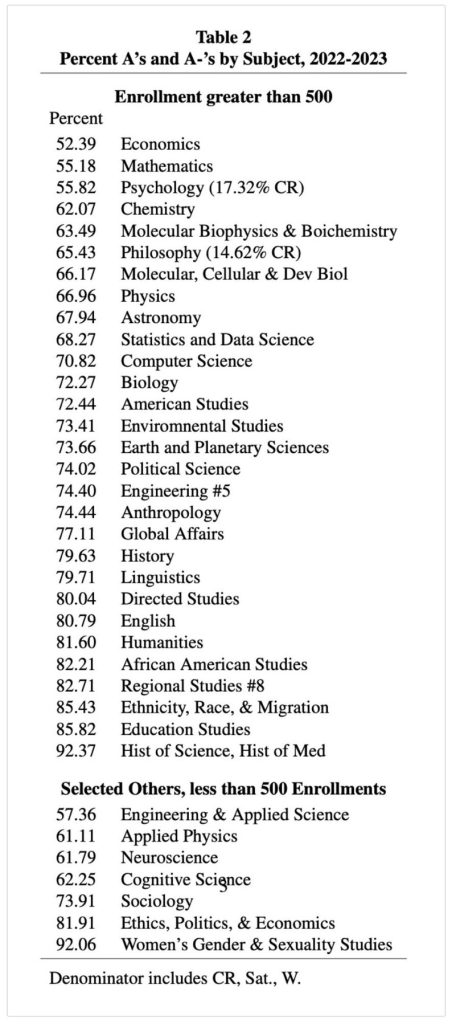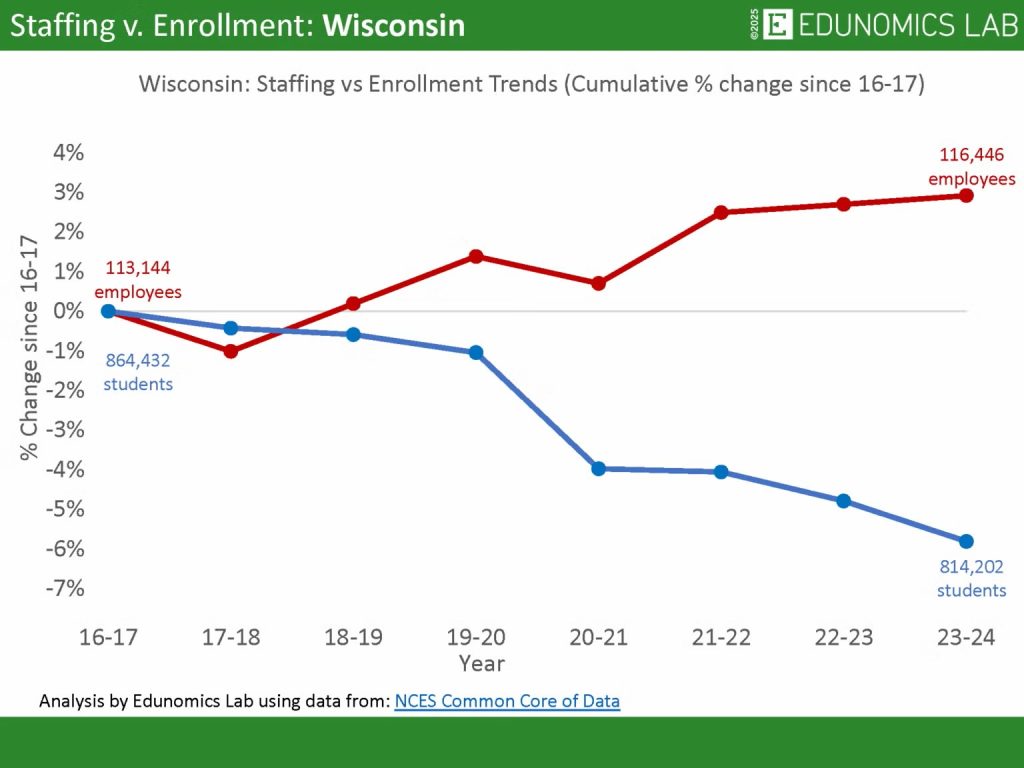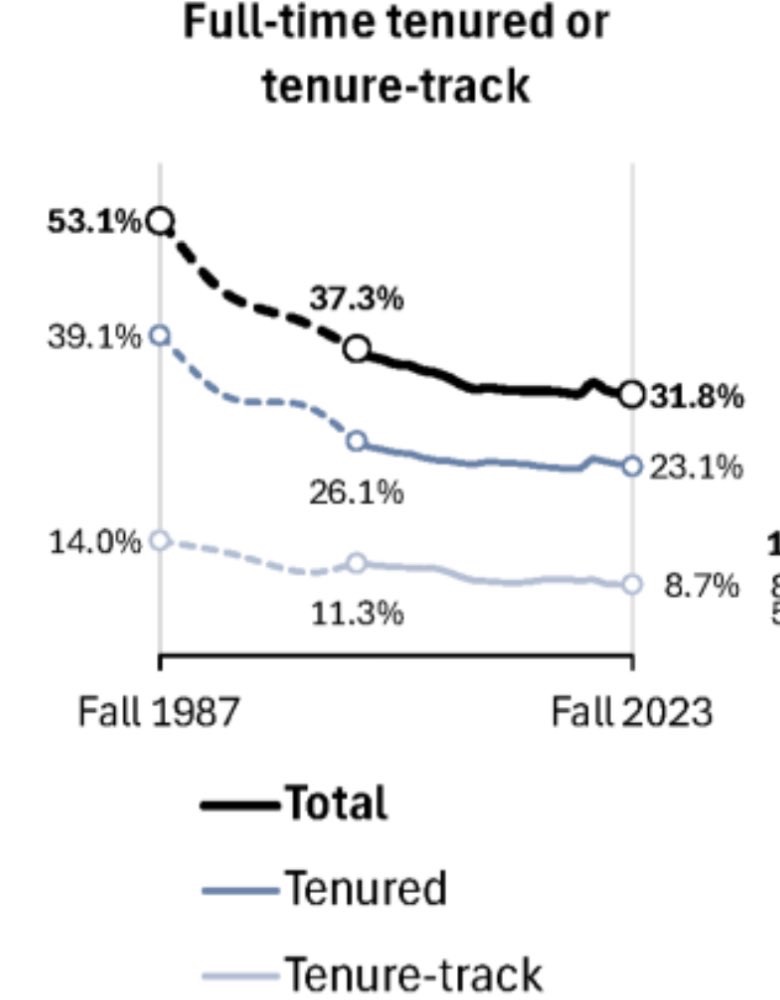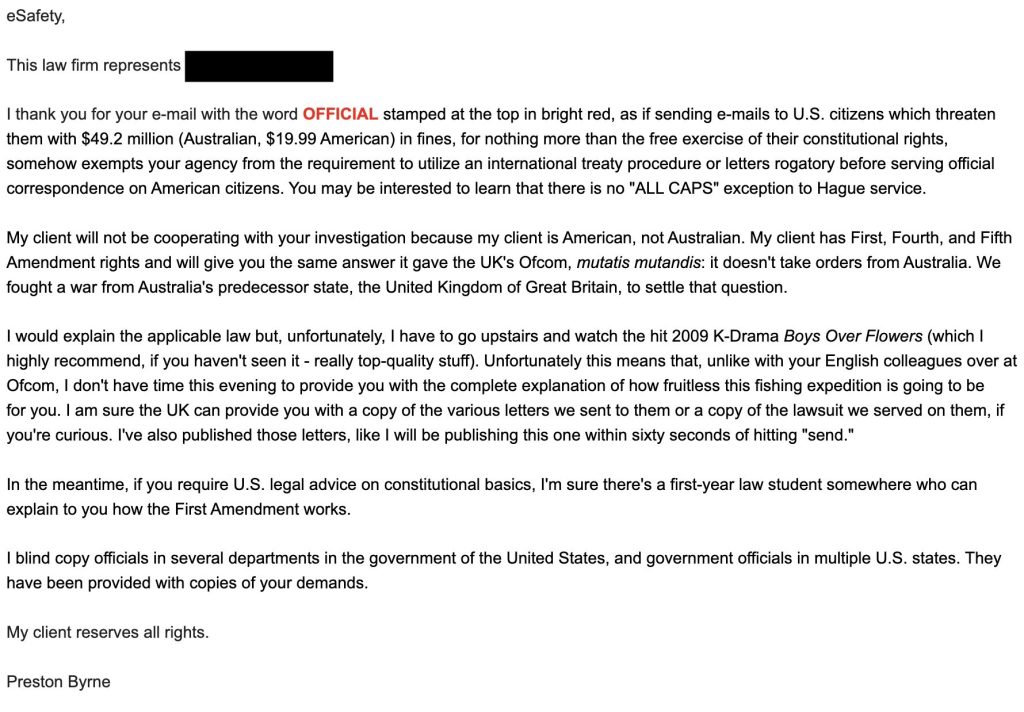In 2024-2025, Wisconsin public schools employed more people than at any other time in state history.1 2 The problem: Wisconsin educated the fewest public-school students since 1991-1992.3 4 With schools set to have the fewest students since the 1950s in just 5 years, budgets are ripping at the seams.5
That fiscal cliff is a major legacy of the 4-year, $189.5 billion ESSER aid program.6 From 2019-2020. to 2023-2024, America’s public schools added over 200,000 staff members while losing almost 1,300,000 students.7 8 Despite this unprecedented investment in children’s education, pandemic policies set back academic progress by 20 years, with the lowest performers devastated the worst.9 10 The very kids ESSERwas meant to save instead may become a lost generation.
Wisconsin’s story is no different. Students received more inflation-adjusted revenue than ever before from 2020-2021 to 2023-2024, the latest year available.11 Yet, grade-school reading scores are historically low.12
Mathematics scores are flat.13 Wisconsin’s average ACT score is 19.2, the lowest mark on record.14
How could this be? Teachers have put in extraordinary effort to reverse a generational crisis. They came down with coronavirus, sacrificed personal time to tutor, and managed lockdown-addled classrooms split between the disruptive and the tuned-out. However, the challenge remains as immense as ever.
——-
More on this point here, where @ReformingGovt also asks why, for instance, the Eau Claire school district spent so much of its one-time pandemic money on hiring permanent staff even as its enrollment fell.
——-
Did taxpayer funded Wisconsin DPI Superintendent Underly Juice Test Scores for Reelection?
——-
Only 31% of 4th graders in Wisconsin read at grade level, which is worse than Mississippi.
——-
Madison taxpayers have long supported far above average (now > $25,000 per student) K-12 tax & spending practices. This, despite long term, disastrous reading results.
Madison Schools: More $, No Accountability
The taxpayer funded Madison School District long used Reading Recovery…
The data clearly indicate that being able to read is not a requirement for graduation at (Madison) East, especially if you are black or Hispanic”
My Question to Wisconsin Governor Tony Evers on Teacher Mulligans and our Disastrous Reading Results
2017: West High Reading Interventionist Teacher’s Remarks to the School Board on Madison’s Disastrous Reading Results
Madison’s taxpayer supported K-12 school district, despite spending far more than most, has long tolerated disastrous reading results.
“An emphasis on adult employment”
Wisconsin Public Policy Forum Madison School District Report[PDF]
WEAC: $1.57 million for Four Wisconsin Senators
Friday Afternoon Veto: Governor Evers Rejects AB446/SB454; an effort to address our long term, disastrous reading results
Booked, but can’t read (Madison): functional literacy, National citizenship and the new face of Dred Scott in the age of mass incarceration.
When A Stands for Average: Students at the UW-Madison School of Education Receive Sky-High Grades. How Smart is That?





